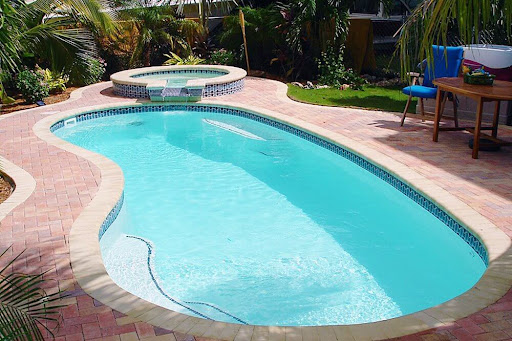
A swimming pool can quickly convert any drab backyard into a sun-drenched haven that people of all ages can enjoy. While fiberglass pool installation requires major time and financial investment, its appeal won’t disappear anytime soon.
So, if you’re ready to take the step and buy an in-ground fiberglass pool from manufacturers, here are six crucial measures to follow to guarantee you obtain the pool that’s right for you and your family.
Table of Contents
Choose The Right Pool Type
Concrete, vinyl-lined, and fiberglass are the three basic kinds of in-ground swimming pools.
Concrete pools are genuinely one-of-a-kind since they can be made to almost any size, shape, or depth. The pool is plastered, painted, and completed with a textured surface, or tiled, when the concrete hardens. A concrete pool takes longer to build than any other type.
A premade flexible liner that fits into the dug hole is used to construct vinyl pools. It’s attached to a steel, aluminum, or non-corrosive polymer strengthened frame. A vinyl-lined pool can take anywhere from one to three weeks to install.
Fiberglass pools are factory-molded into a single massive bowl, which is set into the dug pit with the help of a crane. Consequently, fiberglass pool installation is faster than other forms of pool installation. In addition, fiberglass pools feature a super-smooth gel coat surface that is stain-resistant and incredibly durable.
And once you’ve decided on the style of pool you want, make sure you pick a contractor with a lot of experience installing that type of pool.
Comparison Between Their Costs
Prices of the swimming pool vary significantly based on where you reside, their soil conditions, water-circulation system, and finally, the type and size of the pool. In addition, many fiberglass pool dealers give discounts for fiberglass pool installation when business is slow during the off-season. Thus, the time of year can impact the final pricing.
Concrete pools are often the most costly, followed by vinyl-lined pools and fiberglass pools. A high-end, tricked-out fiberglass pool, on the other hand, may cost more than a basic concrete pool.
The Site Of Fiberglass Pool Installation
The location of your pool is just as crucial as the pool itself. Experienced fiberglass pool companies may offer excellent advice. However, you still need to keep the following pool placement suggestions in your mind:
- Embrace the Sun:
Choose a pool position that is open to the sun and far away from any trees to take advantage of free solar energy. It will warm the water, but it will also lessen the number of leaves that fall into the pool.
- Block Breezes:
Fiberglass pool installation in a windy region dramatically increases water evaporation, requiring you to continuously add water to keep the pool at the right level. When wet, strong gusts might make you feel uncomfortably chilly. Erect a solid-board fence or plant a row of heavy plants to create a windbreak.
- High and Dry:
Avoid placing the pool in a low-lying place since this may cause the pool to overflow with muck and debris during periods of heavy rain.
- All Clear Above and Below:
The pool should not be built immediately over underground sewer lines, septic systems, or electrical cables, nor should it be built directly over overhead telephone or electricity wires.
- Maintain Eye Contact:
Build the swimming pool as close to the home as feasible. This way, even if you’re inside, you can watch swimmers.
Zoning Regulations
Building and zoning restrictions apply to in-ground swimming pools, so you’ll need to apply for a building permit and wait for permission before getting started.
Building and zoning regulations vary by town, but in most cases, setback distances from the pool to property lines, septic tanks, wells, sewer lines, and wetlands must be met. Regulations likewise govern pool barriers and gate hardware.
A perimeter wall or fence must generally be at least 4 feet and have self-closing, self-latching gates. The distance between fence planks or balusters shall not exceed 4 inches. The apertures in chain-link fences must be around 1-1/4 inches wide.
Consider placing alarms on all home entrances and gates leading to the pool and installing a power safety cover over the pool, especially if you have small children or grandkids. Contact your local building department or zoning board for a list of particular laws and limitations.